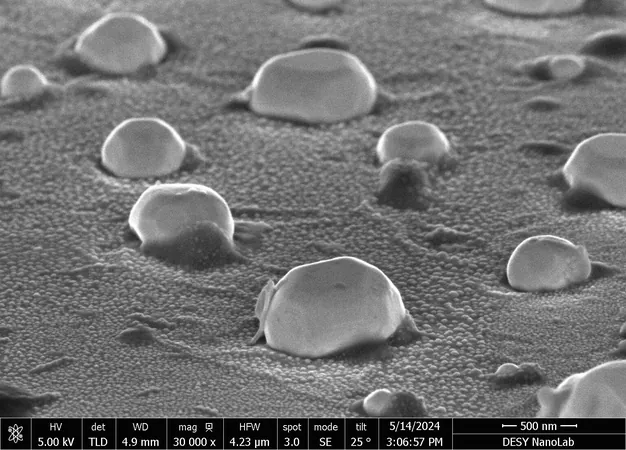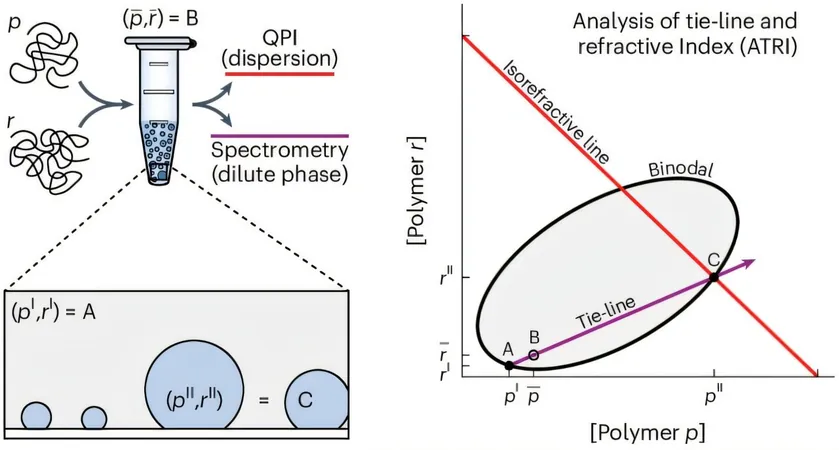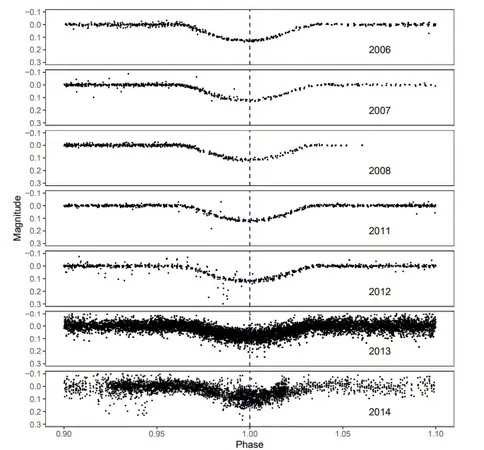
Unlocking the Secrets of Metallic Nanocatalysts: A Game-Changer in Catalysis
2025-09-10
Author: Li
Revolutionary Insights into Nanocatalysts
In an exciting breakthrough, researchers at BESSY II and DESY's NanoLab have unveiled critical information about the behavior of metallic nanocatalysts during catalysis. Published in the prestigious journal ACS Nano, these findings could transform the future of chemical processes.
The Dynamic Duo: Platinum and Rhodium
The study focuses on nanoparticles featuring a platinum core surrounded by a rhodium shell. This innovative structure is pivotal for understanding how these materials function, especially in catalytic environments like emission control. The results reveal that while some rhodium migrates into the platinum core, the majority oxidizes and remains on the surface. This transformation heavily depends on the nanoparticle's surface orientation.
Why Nanoparticles are Catalytic Superstars
Nanoparticles are minuscule, measuring less than one ten-thousandth of a millimeter across, yet they boast vast surface areas relative to their mass. This unique characteristic makes metallic nanoparticles highly effective in facilitating chemical conversions across various applications, from environmental remediation to the creation of sustainable fuels from CO2 and hydrogen.
Unleashing Efficiency with Core-Shell Structures
Platinum is renowned for its catalytic prowess, particularly in converting harmful carbon monoxide emissions from combustion engines into harmless carbon dioxide. However, the integration of rhodium can significantly boost this efficiency. According to lead author Jagrati Dwivedi, the arrangement of these elements is crucial. Core-shell nanoparticles with platinum at the center and a delicate rhodium layer could lead to enhanced catalytic longevity.
Innovative Experimental Techniques
Until this study, the chemical composition changes of catalysts during operation were largely unexplored. Led by Dr. Thomas F. Keller from DESY NanoLab, the research utilized advanced techniques like scanning electron microscopy and atomic force microscopy to investigate these intricate nanoparticles. By precisely marking the samples, the team was able to conduct simultaneous spectroscopic and microscopic analyses using X-ray light.
A Breakthrough in Resolution and Understanding
The SMART instrument at the Fritz Haber Institute offers unprecedented chemical analysis at spacings of just 5–10 nanometers, allowing scientists to observe precise chemical processes at near-surface atomic layers. The study confirmed that rhodium partially diffuses into platinum cores during catalytic activity, particularly in reducing environments, while this mixing slows in oxidizing conditions.
The Role of Facet Orientation in Reaction Rates
Interestingly, the reaction rates are influenced by the orientations of the nanoparticles’ facets. "We found that rhodium oxidation rates are significantly higher on facets with more atomic steps, where binding occurs more readily," notes Dwivedi. This facet-resolved analysis paves the way for further optimization of nanocatalysts, setting the stage for breakthroughs in the efficiency and longevity of catalytic systems.




 Brasil (PT)
Brasil (PT)
 Canada (EN)
Canada (EN)
 Chile (ES)
Chile (ES)
 Česko (CS)
Česko (CS)
 대한민국 (KO)
대한민국 (KO)
 España (ES)
España (ES)
 France (FR)
France (FR)
 Hong Kong (EN)
Hong Kong (EN)
 Italia (IT)
Italia (IT)
 日本 (JA)
日本 (JA)
 Magyarország (HU)
Magyarország (HU)
 Norge (NO)
Norge (NO)
 Polska (PL)
Polska (PL)
 Schweiz (DE)
Schweiz (DE)
 Singapore (EN)
Singapore (EN)
 Sverige (SV)
Sverige (SV)
 Suomi (FI)
Suomi (FI)
 Türkiye (TR)
Türkiye (TR)
 الإمارات العربية المتحدة (AR)
الإمارات العربية المتحدة (AR)